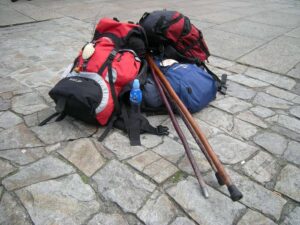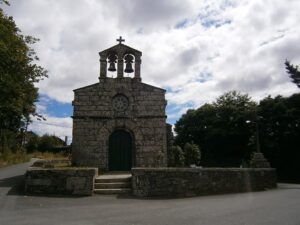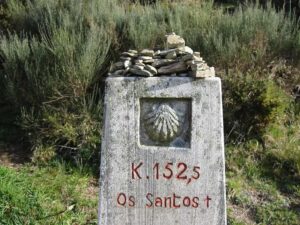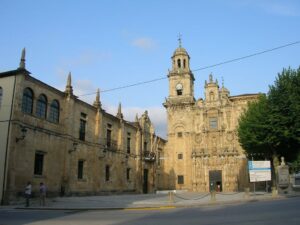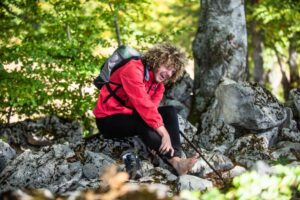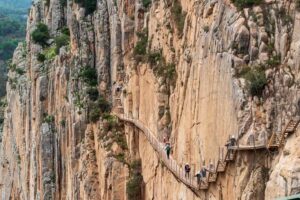Those who love hiking, for the feeling of freedom it gives them, should walk the Way of the Lighthouses. This route guarantees a complete experience with virgin nature full of colors, soft sand and the aroma of the sea. To know everything that this path offers, it is better to know it up close.
Índice de contenidos
Way of the Lighthouses: What is it?
El Way of the Lighthouses It is called “O Camiño dos Faros” in Galician. It is a wild hiking route that makes it possible to union of Malpica and Finisterre (from North to South). This exceptional route, which is on the Death Coast (“Costa da Morte”), is made up of 200 km divided into 8 stages.
Luckily, it is a well-signposted path with stamped footprints and arrows that pilgrims can see to guide themselves. Due to its untamed areas, touring it is an adventure with high ecological value.
If you dare to do Camino de Santiago organized trip You will also have additional help that will allow you to enjoy the road better.
Although at Viajes Mundiplus we do not operate this route due to its poor infrastructure, if you dare to do it on your own and adventure, we give you some ideas.
Reasons to visit it
The route of Way of the Lighthouses it is little traveled. When going through it, you skirt cliffs and cross forests. In addition, impressive beaches are discovered because the sea is constantly on one side. These are other reasons to take this tour:
- Enjoy a amazing view of the atlantic ocean.
- visit all and each of the lighthouses between Malpica and Finisterre.
- walk safely, avoiding the inaccessible or most dangerous sections.
- try the gastronomy in one of the restaurants in the area.
- Enjoy the natural landscapes. You will disconnect from responsibilities and you will feel the adrenaline of starting a new adventure.
The 8 stages of the O Camiño dos Faros
The forests, the mountains, the capes, the sea, the beaches, the streams and the dunes are the stars of the Way of the Lighthouses. The route is also full of legends, sunsets, shipwrecks, villas and people along its stages. Therefore, it is worth knowing each one. If you like adventure and decide on the go kilometers to walk or where to sleep, it is an alternative to the traditional and popular Camino de Santiago from Sarria Santiago.
Malpica to Children
The initial stage consists of 21,3 km (with 5 km of significant climbs) and a drop of 459 meters. Spectacular views will not be missing, as it has incredible cliffs and a total of 6 beaches. Among them Seiruga, Area Maior, Niñóns, Seaia and Beo.
Other points worth visiting They are: the coast in Nariga and the Sisargas Islands.
Children to Ponteceso
Moving on to stage number two of the Way of the Lighthouses, it is possible to find a beautiful variety of landscapes. Well, it starts with coves and goes through the spectacular cliffs of Cabo Roncudo. Afterwards, you walk along the Ría de Laxe and end at A Barra (the dunes).
Is a route made up of 26 kms and a drop of 516 meters in total. The first part is more demanding, but the second is more flat.
Pontecesso to Laxe
The route makes a turn inland that allows you to appreciate these two wonders: Castro de Borneiro and Dolmen of Dombate. Upon reaching Monte Castelo de Lourido, the highest level of altitude in the entire route is reached.
This third stage accumulates around 25 km, along with 217 meters of unevenness, and is full of beaches. The first part is a climb, but from Ponteceso to Laxe there are more sections with road. Therefore, compared to the first two stages, this one is more bearable.
Laxe to Arou
The easiest stage of the Way of the Lighthouses is from Laxe to Arou. Although it is shorter, it does not lack charm thanks to the fact that it has the Lighthouse in Laxe. He also owns the Peñón de Soesto and the Museum of Man. While for beach lovers there are Praia de Traba and Praia dos Cristais.
For these reasons, the recommendation is to choose this stage if you only have 1 day to visit the Camino. In this way, its route of approximately 18 km and an unevenness of 204 m will be more enjoyed. Definitely with those numbers proves to be the most affordable stage.
Arou to Camarinas
Arou is connected to Camariñas in stage number five of O Camiño dos Faros. The demand that is required to go through it is similar to how spectacular it is, so it is impossible to get bored.
You can see the Monte Branco Dune, Praia de Lobeiras, the Vilán Lighthouse and the Cemetery called dos Ingleses. In total, they have 23 km and their unevenness is medium, with 296 m.
Camarinas to Muxia
The stage that goes from Camariñas to Muxía is the longest, but it is also flatter. This is because this route goes through the Camariñas estuary, and involves going through numerous villages. Unlike the other stages, which go along more uninhabited and rugged coasts.
Therefore, it is enough to go out early and be in moderate physical shape to overcome it. The list of interesting points to visit covers Lago and Leis beaches, as well as the Muxía Lighthouse. Speaking specifically, the difference in altitude is about 470 meters and the route covers 32 km in total.
Muxia to Nemina
El Way of the Lighthouses it connects Muxía and Nemiña through the coast. This penultimate stage is more abrupt, with its 25,3 km and a level of about 912 meters. So it will be necessary to take the time due to spend it calmly.
Once you pass Praia de Moreira, the section begins to become flatter. But all the way there are amazing landscapes that are capable of astonishing anyone who sees them.
Nemina to Cape Finisterre
The final stage connects Nemiña with Cabo de Finisterre. This route is hard but incredible, as it passes through many cliffs and beaches.
Besides, in its 26 kms is the Lires estuary, Monte do Facho, Fisterra Lighthouse and Castro de Castrominan. The unevenness is 815 meters, and these are concentrated above all in the second part of this stage. There is no doubt that it is a Camino in which you can enjoy many things.

